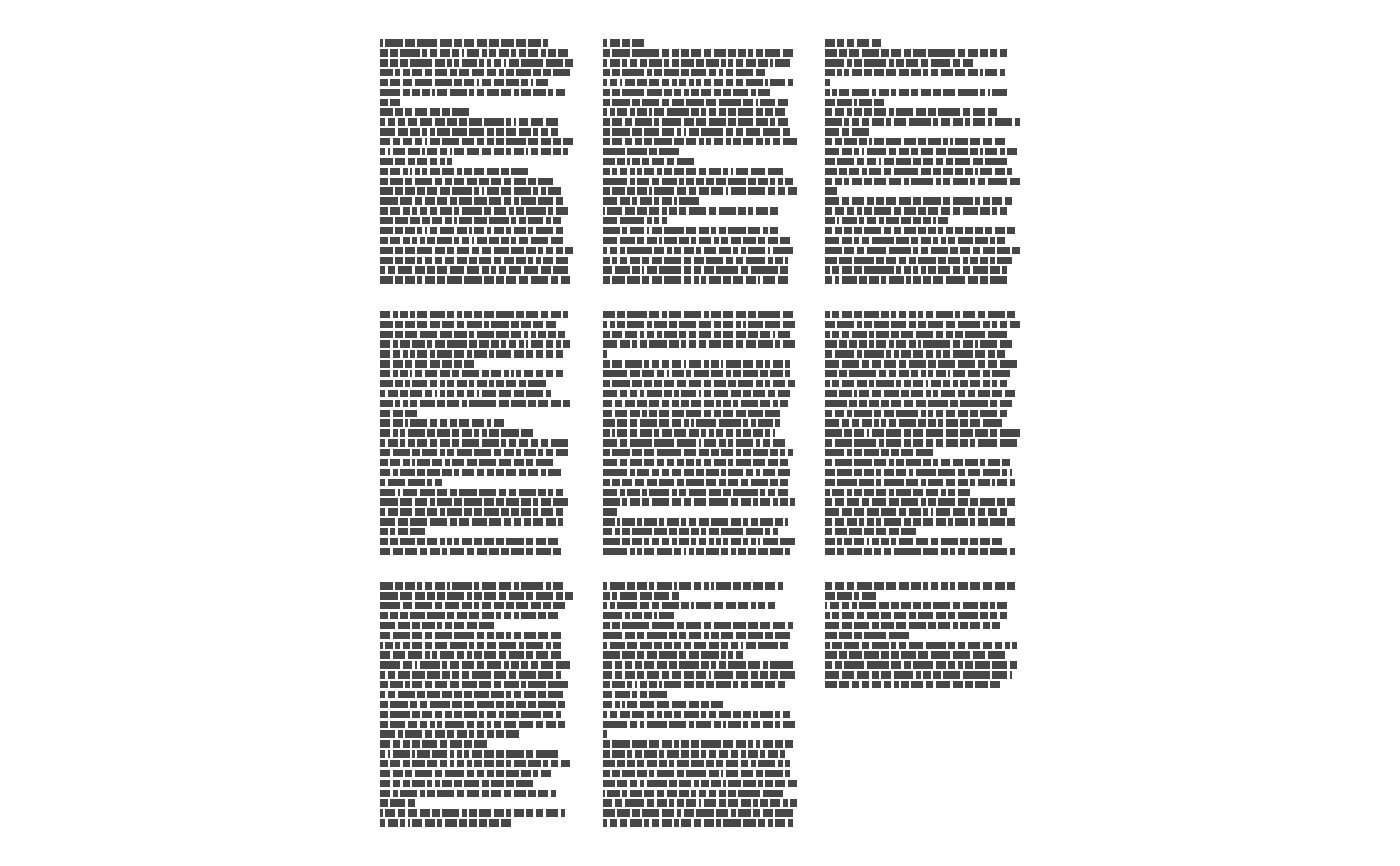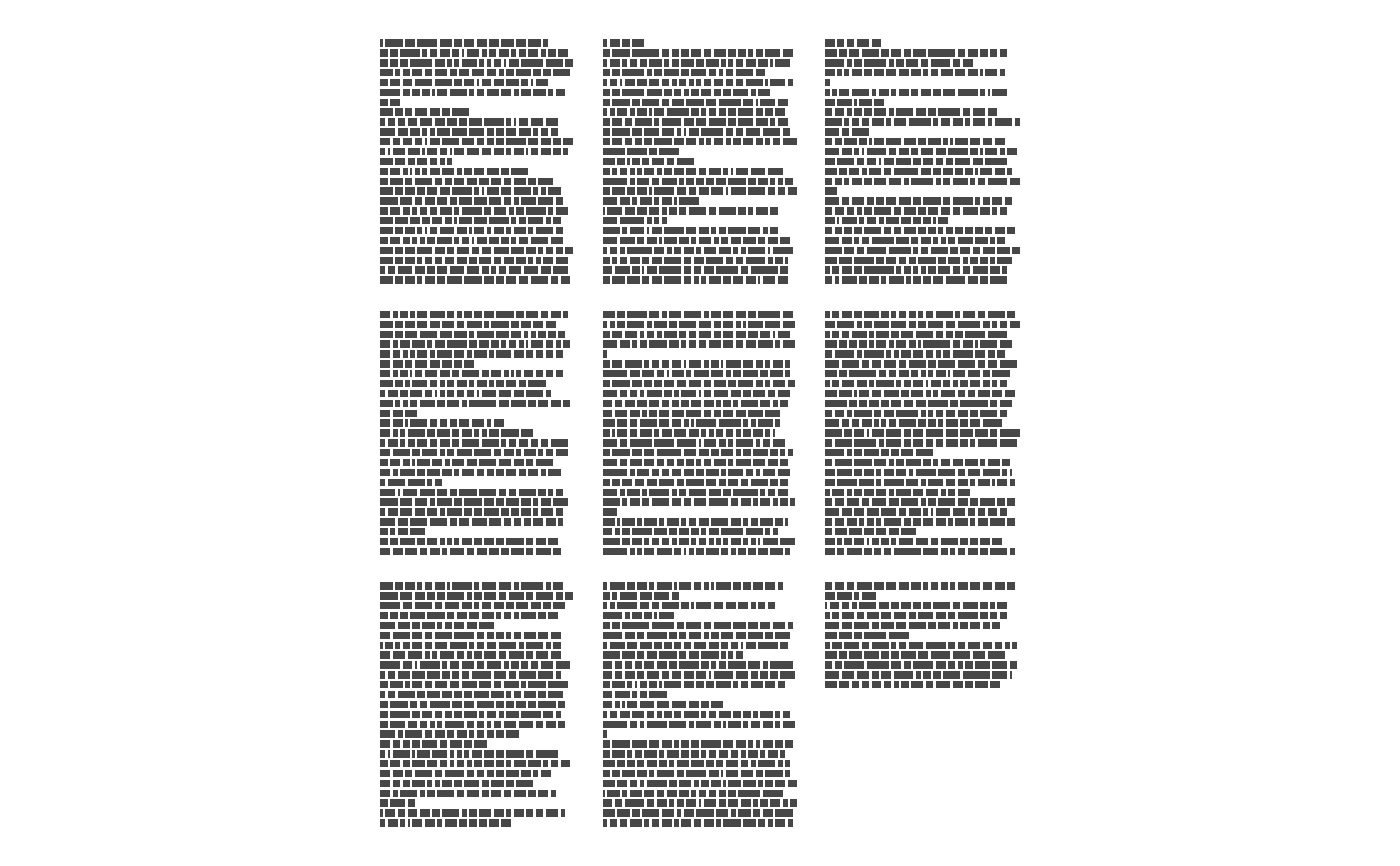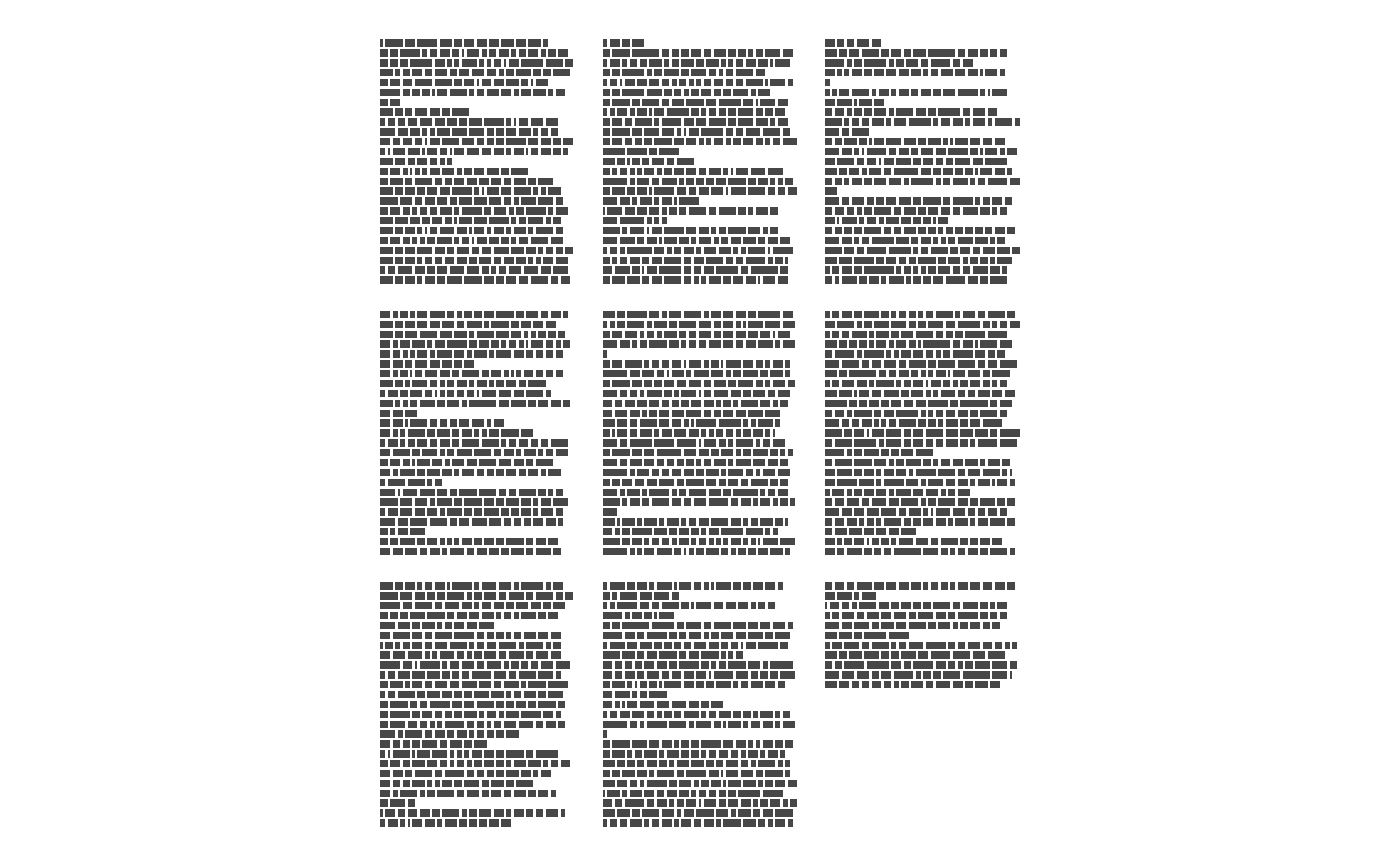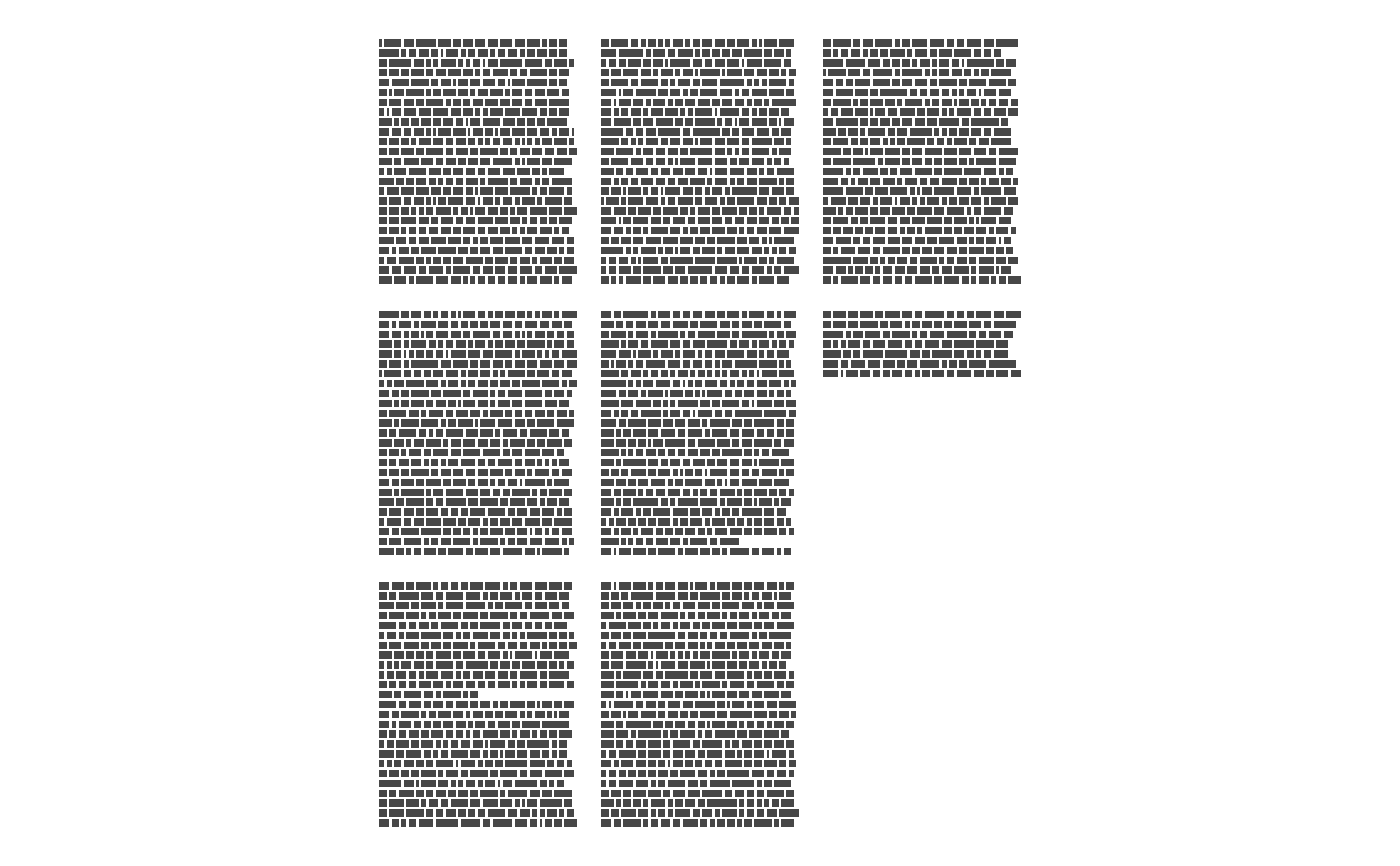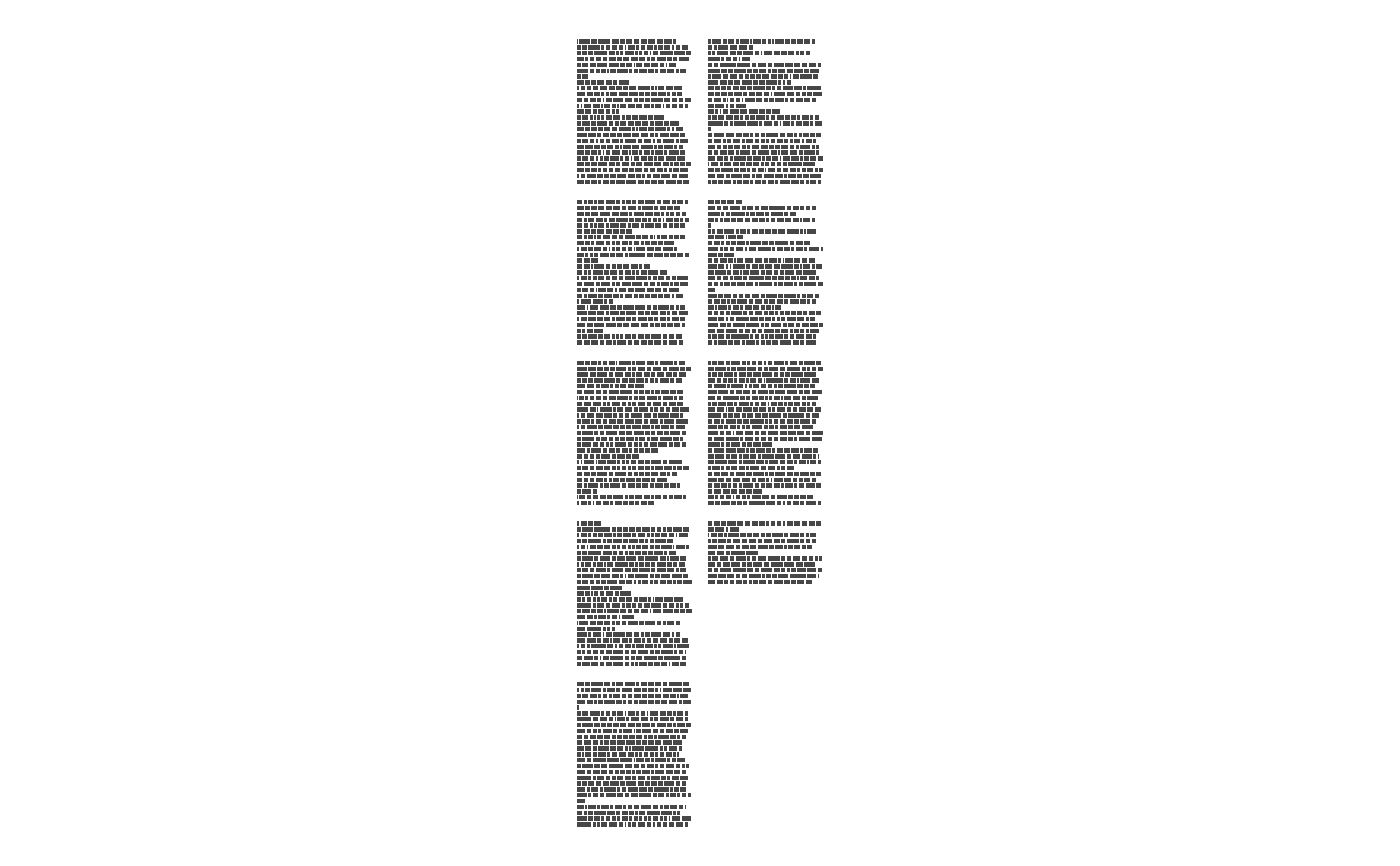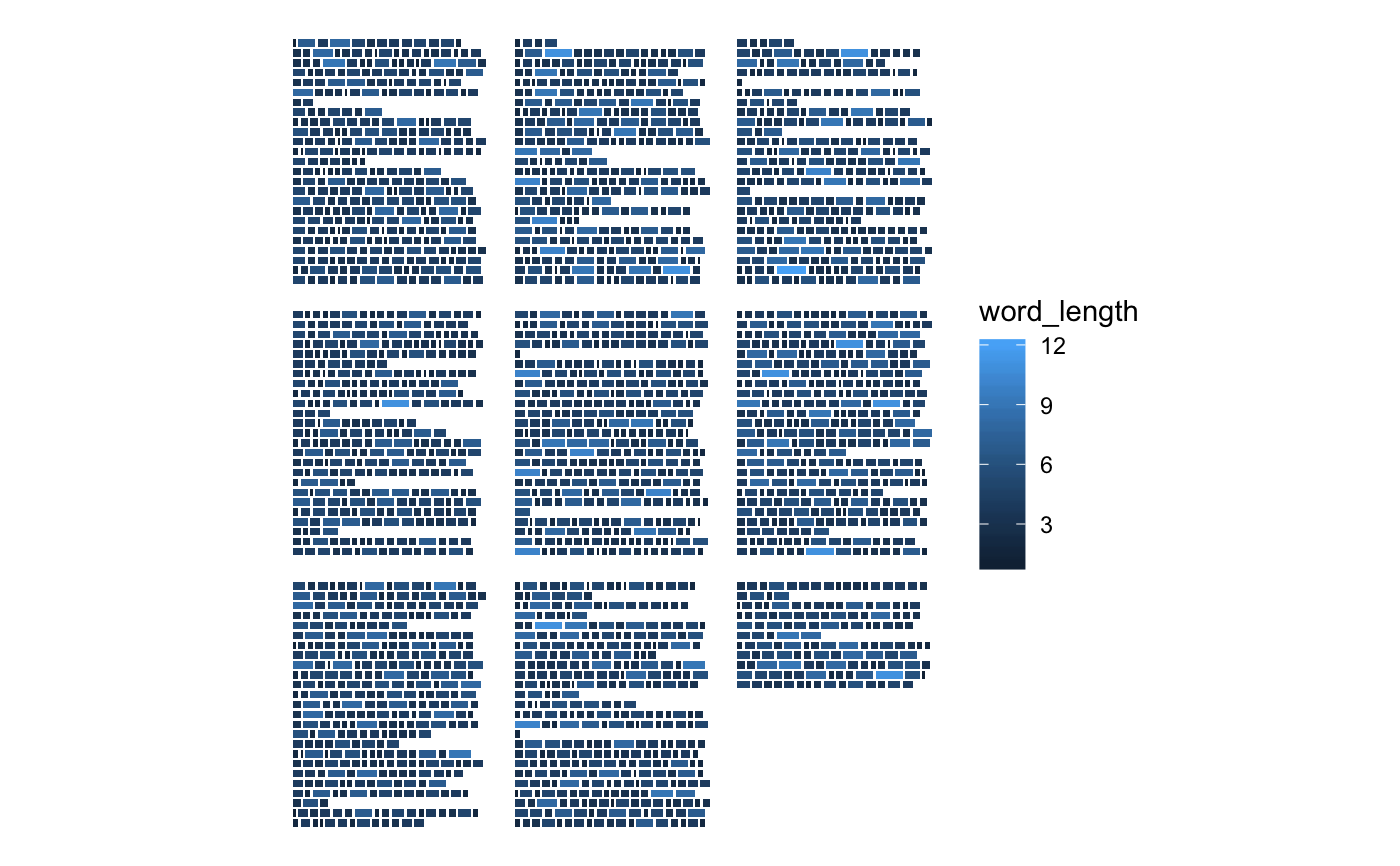Creates a visualization from the ggpage_build output
ggpage_plot(data, mapping = ggplot2::aes(), paper.show = FALSE, paper.color = "grey90", paper.alpha = 1, paper.limits = 3, page.number = character(1), page.number.x = 3, page.number.y = 3)
Arguments
| data | data.frame. Expects output from |
|---|---|
| mapping | Default list of aesthetic mappings to use for plot to be
handed to internal |
| paper.show | Shows the paper underneath the text. |
| paper.color | Color of the pages. Needs to be of length 1 or the same as the number of pages. |
| paper.alpha | Alpha of the pages. Needs to be of length 1 or the same as the number of pages. |
| paper.limits | Numerical. Extends the edges of the paper in all directions. |
| page.number | Position of the page number. Defaults to none. |
| page.number.x | Distance the page number is pushed away from the text along the x-axis. |
| page.number.y | Distance the page number is pushed away from the text along the y-axis. |
Value
A ggplot object with the given visualization.
Examples
library(dplyr) library(stringr) library(ggplot2) library(tidytext) library(ggpage) # build and plot ## data.frame with full lines ggpage_build(tinderbox) %>% ggpage_plot()## data.frame with single words ggpage_build(tinderbox) %>% unnest_tokens(text, word) %>% ggpage_plot()## vector with single words ggpage_build(tinderbox %>% unnest_tokens(text, text) %>% pull(text)) %>% ggpage_plot()# Include analysis within ggpage_build(tinderbox) %>% mutate(word_length = str_length(word)) %>% ggpage_plot(aes(fill = word_length))
